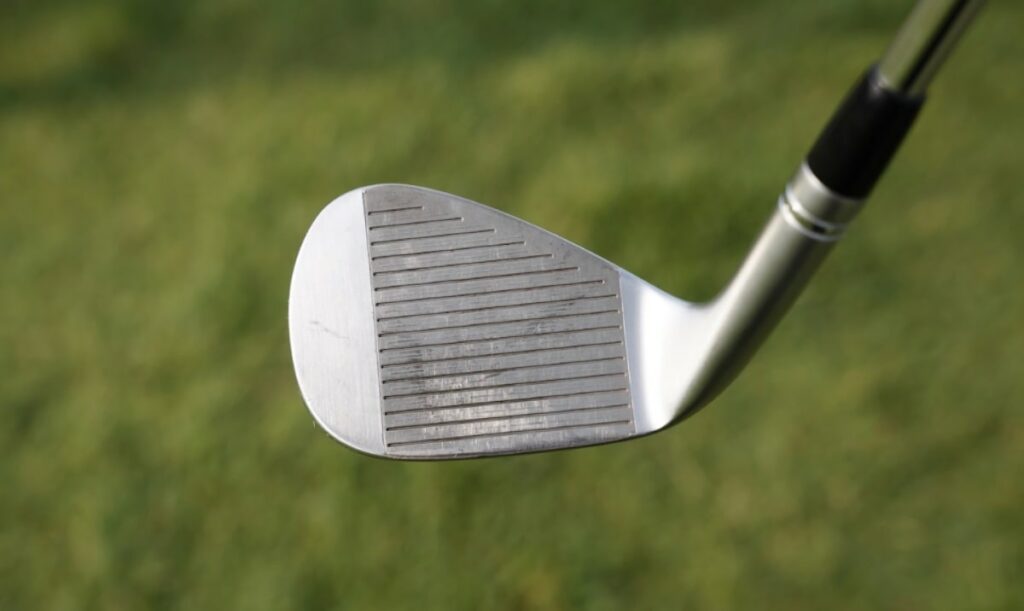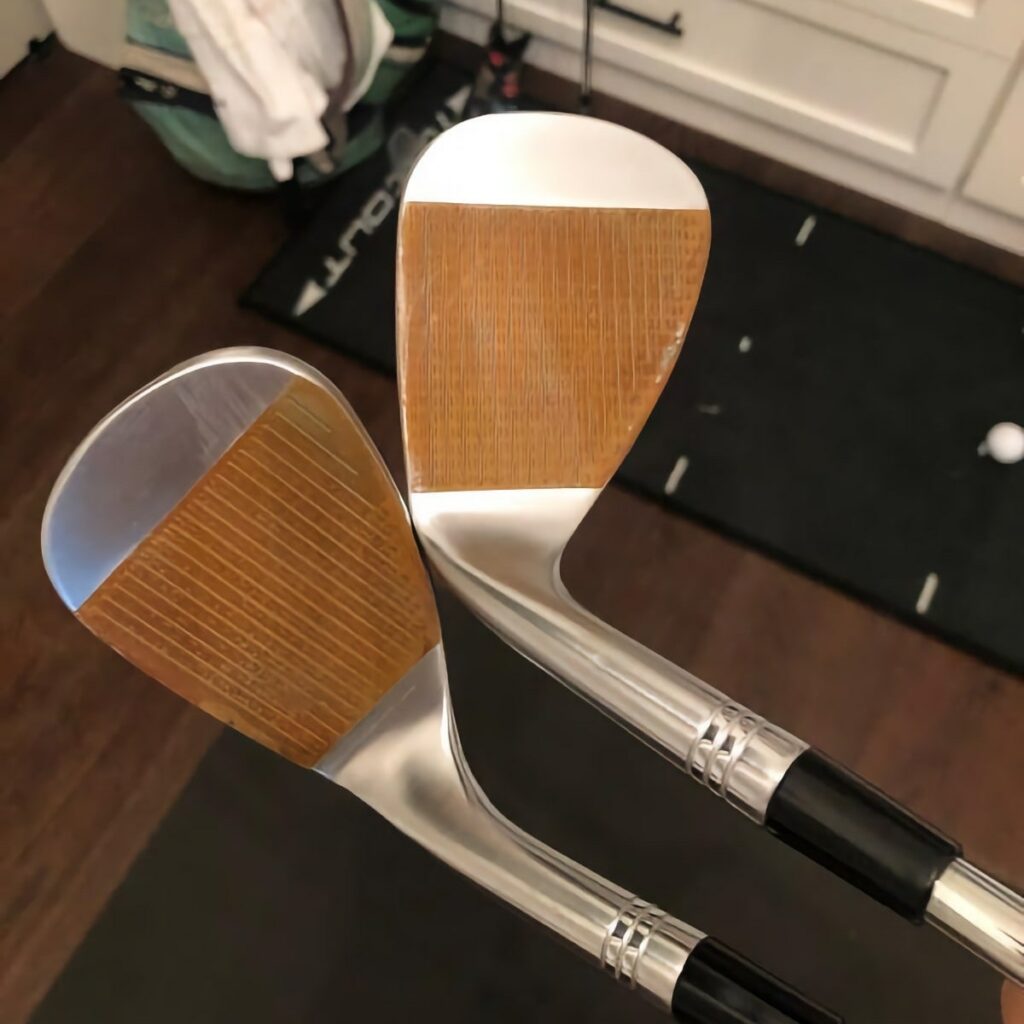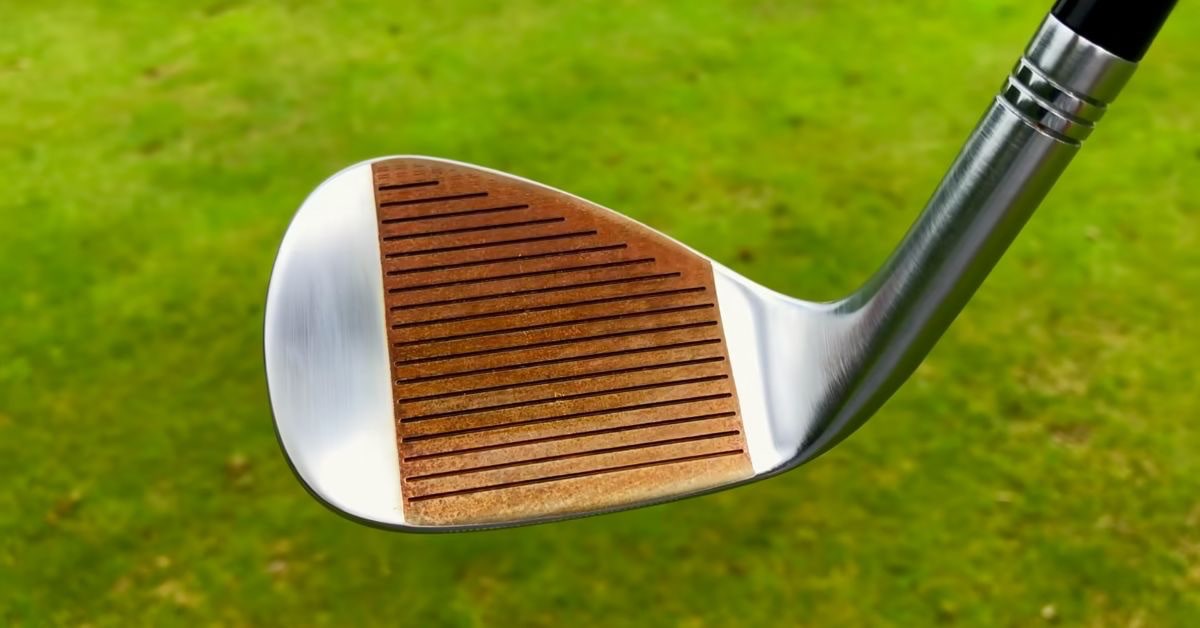Raw wedges are designed to develop a rusty patina over time.
In theory, this can enhance spin by imparting extra friction on the ball. Also, it helps to prevent glare from the sun when behind the ball at address.
However, the raw wedge aesthetic splits opinions. While some golfers like the rusty appearance, others prefer to keep their wedges looking pristine for longer.
In this article, you’ll learn how to keep raw wedges from rusting. I’ll show you the best ways to decelerate the rusting process, along with ways to remove the rust.
How to Keep Raw Wedges From Rusting
To keep raw wedges from rusting, dry your wedges after every shot and round using a towel. Also, you can apply WD-40 to the raw face. Put simply, this will protect the face from moisture, which causes surface rust. To remove rust, you can use either WD-40, vinegar, or Coca-Cola.

With raw wedges, the clubface will inevitably develop rust over time. To avoid this, you can either remove the rust periodically or prevent it from occurring in the first place.
Here are some simple ways to keep raw wedges from rusting over time:
- Dry your wedges after each shot and round
- Protect from rust with WD-40 Multi-Use
- Remove rust with WD-40 Rust Remover Soak
Let’s cover each tip in some more detail.
Tip 1: Dry Your Wedges
The best way to prevent your raw wedges from rusting is to dry them after each round.
Rust is formed when the raw steel face is exposed to oxygen and water. By removing water from the equation, you can significantly decelerate the rusting process.
Bring a dry towel with you every time you play. Then, try and dry off your wedges as best you can after each shot. At the end of your round, remove any excess water.
Also, drying your wedges after each shot is likely to improve spin the next time you pull out the wedge. So, it’s a great habit to build for a number of reasons.
PRO TIP: It’s especially important to thoroughly dry your clubs at the end of the season. Over the winter, raw wedges are likely to rust considerably faster if exposed to water while they’re in storage.
Tip 2: Protect With WD-40
Another way to prevent rust is to apply some WD-40 Multi-Use every few months.
Essentially, WD-40 Multi-Use acts as a corrosion inhibitor. By spraying it on your raw wedges, you can shield them against moisture to prevent rust.
This method, combined with periodically drying your wedges with a towel, will go a long way to keeping your wedges looking fresh and rust-free for months and years.
>> You can order WD-40 Multi-Use here
Tip 3: Remove Rust With WD-40
If your wedges are already showing signs of rusting, this can be easily removed.
To remove rust from your clubs, apply some WD-40 Rust Remover Soak using a microfiber cloth. This non-toxic soak will dissolve the rust.
Alternatively, you can try applying vinegar or Coca-Cola to the face. Both are capable of removing surface-level rust from the face of a raw wedge.
Then, simply wash off any excess with water and dry thoroughly with a towel.
In addition, you can use a Scotch-Brite pad to remove any stubborn spots of surface rust. Although, the WD-40 solution alone is likely to do the job.
PRO TIP: Make sure to only apply rust removal solutions to the raw face, to avoid any potential reaction with the chrome finish on the other parts of the club head.

How Long Do Raw Wedges Take to Rust?
Typically, raw wedges take anywhere from one day to several months to develop rust on the face. Put simply, the timeline depends largely on the conditions you play in.
Raw wedges will develop surface rust faster if the ground conditions are wet. In an interview with TGW, Chander Carr from TaylorMade stated:
“Surface rust can happen overnight, after just one round. If the ground is a little wet or has just any kind of moisture, you can notice surface rust right away. But it does take time for it to rust through and get down into the wedge. It does take a little bit of time. It’s something you’ll notice over the life of the wedge the more you play.”
Chandler Carr, TaylorMade
As stated earlier in the article, moisture causes rust. So, drying your clubs will prevent rust from forming — and keeping them wet will speed up the rusting process.
Conversely, the raw face is exposed to far less moisture in dry conditions. This means it will take significantly longer to notice signs of rust forming on the face.
However, there are faster ways to rust wedges with the help of some ingredients.
First, mix a solution with the following ingredients:
- 16oz hydrogen peroxide
- 2oz white vinegar
- 1/2 tablespoon of salt
Then, spray the solution on the club head. In minutes, the raw face will begin to develop a layer of surface rust, which will darken over time to a beautiful patina.
Ultimately, the time it takes for raw wedges to rust depends largely on the exposure to moisture. If you’re looking to slow down the process, remove water where possible.

Conclusion
In summary, to keep raw wedges from rusting you should dry your wedges after every round to prevent water from reacting with the raw face. Also, you can apply WD-40 to create a protective coating against moisture and surface rust.
If your raw wedges are already rusty, you can apply WD-40 Rust Removal Soak with a cloth to wipe away the surface rust that has developed over time.
Finally, consider swapping your raw wedges for a set of rust-resistant chrome wedges, which provide a natural barrier against moisture to prevent rust from forming.


